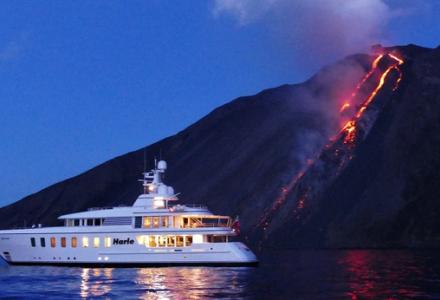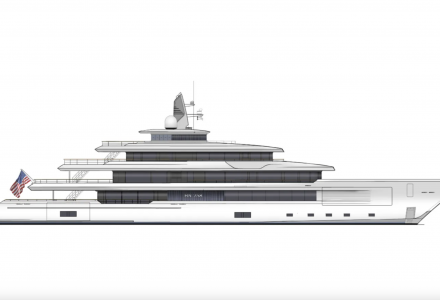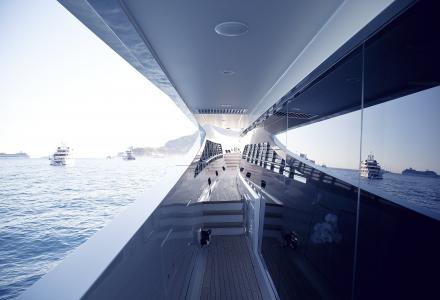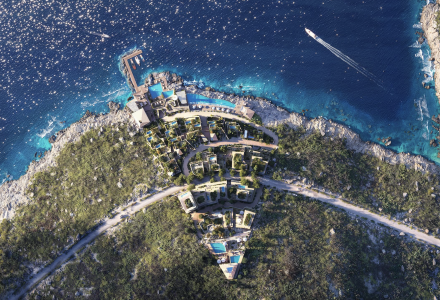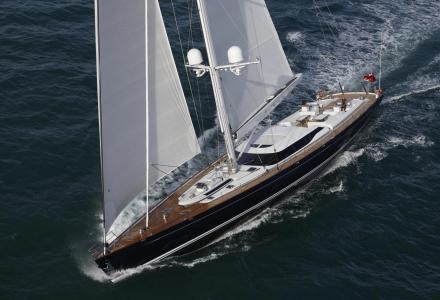According to media sources, several major scientific and historical discoveries were made in a series of submersible dives by an expedition on-board 44.65-metre Feadship superyacht Harle.
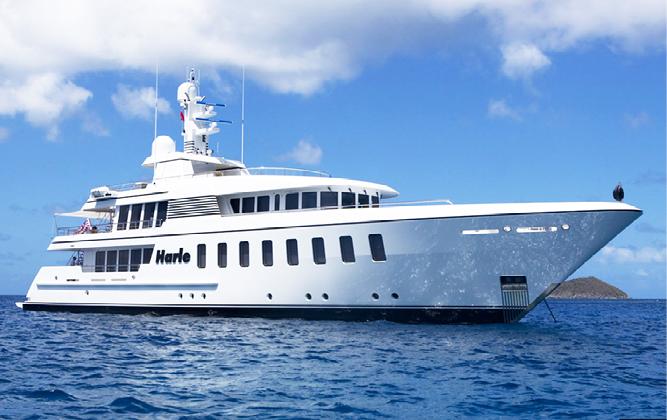
Organised and led by Cookson Adventures, the expedition team was formed by leading marine scientists from Europe. They conducted submersions in the Tyrrhenian Sea and the Gulf of Naples.
One of the most significant discoveries from the expedition has been the existence of untouched Coralium ruburn populations. That rare species of red coral was found 200 metres below the waterline, in the natural underwater cliff face of Sant’Angelo.
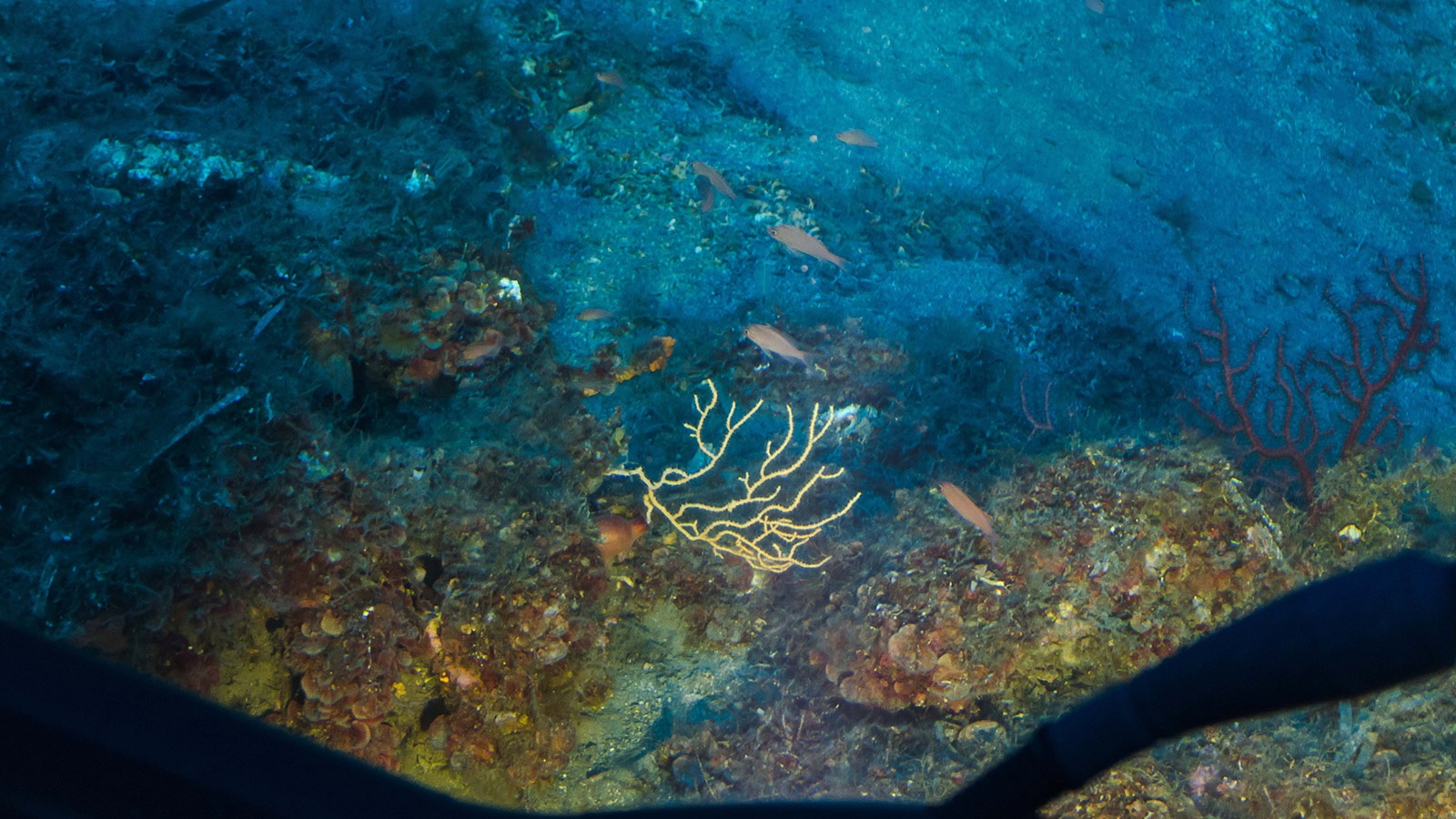
Mainly pillaged for jewellery since the ancient times, the discovered red coral is centuries-old, though preserving its high density. It lays in close proximity to “healthy schools of sardines, anchovies and bogues”.
Another interesting discovery of the operation has been a rare species of black coral. They were found in several locations off the Sicilian coast, while normally they are evident in tropical areas.
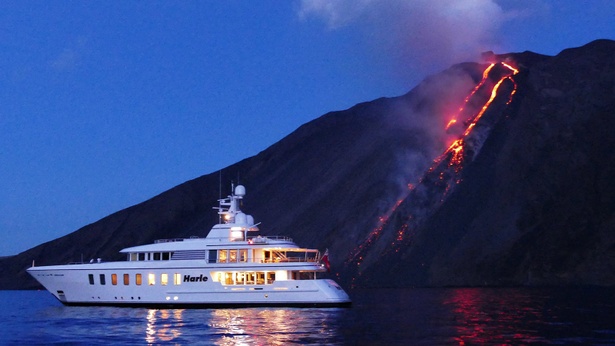
Furthermore, a worrying scientific discovery has been made, with an “unprecedented” growth in algae caused by increasing sea temperatures.
Jointly with volcanologists from the National Institute of Geophysics and Volcanology, the scientists also documented evidence of new volcanic activity on the island of Stromboli, where the volcano erupted this summer.
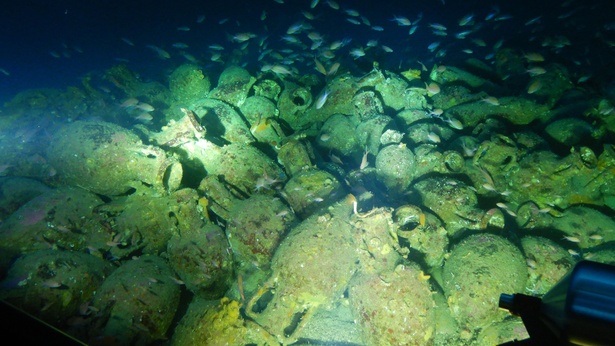
The list of historical discoveries meanwhile is also worth mentioning, comprising Roman shipwreck and its spilled amphora cargo found off the coast of Capri, in the first manned submersible dive on the wreck.
Facebook
Twitter
Pinterest
Latest News
Royal Hakvoort has signed a construction contract for a 70.1-meter superyacht, designated Project YN258. The vessel, designed for long-range cruising, will be the largest project in the shipyard's history in terms of both length and gross tonnage.Construction will begin immediately at the shipyard's facility in Monnickendam, the Netherlands, with delivery scheduled for 2029. The project involves an all-Dutch team, with Sinot Yacht Architecture & Design responsible for the design and Diana Yacht Design providing the naval architecture. The sale was brokered by 26 North Yachts, with Arrow Monaco acting as the owner's project management company.The yacht will have a beam of 11.6 meters and a gross tonnage of 1,513. Accommodation is planned for up to 14 guests in seven cabins, including two owners' suites – one located on the bridge deck and another occupying the entire owners' deck. Crew quarters will accommodate 20 staff and include a mess hall, a dedicated gym, and technical spaces designed for accessibility on long voyages.Reported features include a touch-and-go helipad, a sports court, and a swimming pool, with a layout emphasizing a balance between indoor and outdoor areas.Royal Hakvoort is a family-owned shipyard. She was founded by Albert Kizn Hakvoort in 1919. The yard is based in the historic Dutch village of Monnickendam. The shipyard is able to guarantee best in class quality for custom built motor yachts and sailing yachts up to 65m in length.Credits: Royal Hakvoort
September 23, 2025
German marine glass manufacturer Yachtglass and Italian manufacturer Hard Glass have established a joint venture named Ocean Glass. The companies will continue to operate independently while using the new entity to develop markets and provide glazing solutions to shipyards internationally.The joint venture will be officially introduced at the 2025 Monaco Yacht Show at Stand DS 57 in Darse Sud. Both companies have previously supplied custom glass for yachts, including vessels exceeding 120 meters in length.Silvia Buck, CEO of Yachtglass, stated: “This strategic partnership merges German engineering precision with Italian design expertise. Together, we’re poised to deliver custom, high-specification glass solutions for the most sophisticated superyachts on the market. We’re particularly focused on expanding our presence in Turkey, the Middle East, and Asia - regions where demand for premium European craftsmanship continues to grow.”Fiorenzo Furlan, president of Hard Glass, added: “Ocean Glass represents the fusion of uncompromising quality and refined aesthetics at sea. Our new venture is committed to delivering marine glass systems that meet the highest standards of safety, performance, and design. Partnering with Yachtglass allows us to scale our vision and set new benchmarks for the industry.”The formation of Ocean Glass occurs as demand increases for large-scale glazing solutions on superyachts, where exteriors often incorporate hundreds of square meters of custom glass. The venture aims to combine German engineering and Italian design capabilities to serve emerging shipbuilding regions.Credits: Ocean Glass
September 23, 2025
Northrop & Johnson has listed the 23.86-meter expedition yacht Vanguard for sale at $3,980,000. Yacht Broker Mike Finnegan is representing the vessel, which was delivered by Naval Yachts in 2023.The XPM 78 platform yacht is designed for long-range cruising with a focus on efficiency and system integration. Vanguard recently completed a 7,000-nautical-mile voyage along the U.S. Atlantic Coast and into Greenland's High Arctic waters, conducted with two ice pilots onboard.Propulsion is provided by a diesel-electric Praxis hybrid system with an integrated energy management network. The yacht cruises at 9 knots with a reported fuel consumption of 3.5 liters per nautical mile, providing a range exceeding 7,000 nautical miles. Technical features include an ice-reinforced hull, DMS Magnus Master stabilizers, and a commercial-grade dynamic positioning system.The interior, designed by Arista Marine, follows an open-plan layout with the galley, helm, and salon located on the main deck. Finishes include pale timbers with dark contrast elements. The helm station is equipped with dual high-back chairs and a multi-display dashboard.Accommodation is provided for six guests in three en-suite staterooms, with a convertible salon that can accommodate two additional guests. The full-beam owner's cabin contains a king-sized berth and lounge seating.Exterior areas are configured for operational functionality, featuring a tender crane and storage on the aft main deck with L-shaped guest seating. The flybridge helm seats two persons, with dual stairways leading to the swim platform. All exterior spaces are designed for low maintenance and expedition readiness.Credits: Northrop & Johnson
September 23, 2025
Luca Dini Design & Architecture has entered into an agreement with Albania’s Ministry of Infrastructure and Energy to explore the development of a national maritime strategy. The initiative aims to position Albania as a sustainable yachting hub in the Mediterranean.The proposed strategy involves creating a network of interconnected marinas designed to share resources and infrastructure rather than compete. The approach intends to improve logistical efficiency, support regional economic growth, and reduce environmental impact. Albania’s geographic position near established yachting destinations such as Greece and Montenegro, along with its undeveloped coastline, is seen as a foundation for attracting seasonal boaters and superyachts.The project envisions the development of service facilities including repair yards, refit stations, and fueling areas to meet international standards and accommodate larger vessels. The plan emphasizes adopting sustainability principles in new marina construction and diversifying specializations across different locations to reduce congestion and environmental pressure. Intermodal transport connections with road and rail networks are also part of the proposed strategy to link coastal and inland regions.The concept aligns with European Union initiatives such as the Trans-European Transport Network (TEN-T), focusing on integration with continental trade and logistics systems. Luca Dini Design & Architecture will contribute expertise in architecture, yacht design, and master planning to the project. The firm indicated that the next 15 years represent a critical period for Albania to establish itself as a competitive maritime destination through coordinated planning.Credits: Luca Dini Design & Architecture
September 22, 2025
Camper & Nicholsons has listed the sailing yacht Imagine for sale at €17,800,000, with VAT paid. The 44.18-meter vessel is represented by Sales Advisor Maël Fiolet and was available for viewings at anchor during the Monaco Yacht Show, which opened on September 18.Built in 2010 by Alloy Yachts to a design by Ed Dubois, Imagine remains under its original ownership. The yacht was designed for worldwide cruising and has never been chartered. It complies with LY2 regulations and completed its Lloyd’s 15-year survey in 2025 alongside an extensive refit. In 2011, the yacht received the Best Sailing Yacht award at the World Superyacht Awards.The yacht accommodates nine guests in four cabins. The full-beam master suite is located aft and includes an en suite bathroom, walk-in wardrobe, study, and vanity area. Additional accommodation consists of one double guest cabin, one twin cabin with a Pullman berth, and a fourth cabin configured as a single with a Pullman. The main saloon sofa can convert into two additional bunks if required.The interior offers 242 square meters of living space finished with white oak joinery, Loro Piana fabrics, and alpaca carpets. The raised salon features panoramic windows and a split-level arrangement with a lounge area to port and a navigation station to starboard. Custom features include an automated sliding companionway door, opening portholes in the master suite, underfloor freezers, and a firearms safe for Arctic voyages.Deck areas include a forward cockpit with dining space and sunpads, a boom awning for shade, and a foredeck tender well that converts to a heated spa pool. A crow's nest is positioned on the mast for observation.The yacht is equipped with a 61.9-meter Southern Spars mast, carbon fiber rigging, and a furling boom. The sail plan includes 895 square meters of upwind sail area managed by captive winches built by Alloy Yachts. A lifting keel allows operation in both shallow waters and open ocean conditions. All sails have been upgraded over time, with a new North Sails jib installed in 2025.Power is provided by a single Caterpillar C18 engine. The yacht carries a diesel-powered tender, which eliminates the need for separate refueling arrangements. The vessel is maintained for serious cruising with systems designed for extended autonomous voyages.Credits: Alloy Yachts
September 22, 2025
